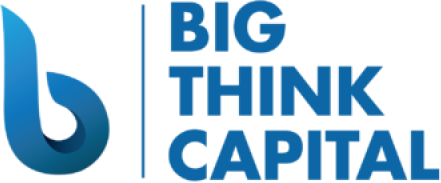Navigating Inflation Trends and the Shift to Digital Cash Flow Management: A 2025 Guide for Small Businesses
Estimated reading time: 7 minutes
- Actively monitor economic indicators to adapt your business strategies.
- Embrace digital tools for effective cash flow management.
- Leverage diverse funding options like working capital advances and SBA loans.
Table of Contents
- Understanding Inflation Trends and Federal Reserve Actions
- How Inflation Affects Small Businesses
- The Benefits of Digital Cash Flow Management Tools
- Tips for Maintaining Strong Bank Relationships
- Leveraging Working Capital Advances and SBA Loans Amid Inflation
- Practical Takeaways for Business Owners Exploring Financing
- Conclusion and Call to Action
Understanding Inflation Trends and Federal Reserve Actions
In recent months, the Federal Reserve has taken measures to address inflation concerns by adjusting interest rates. As of early 2025, inflationary pressures remain a significant factor that small business owners like yourself should pay attention to. According to the U.S. Bureau of Labor Statistics, the Consumer Price Index (CPI) has shown an annual increase of approximately 4.5% in January 2025, which, while down from previous heights, still signifies that the purchasing power of consumers is under pressure.
When the Fed raises interest rates, it is typically a response aimed at curbing inflation. However, higher rates can also lead to increased borrowing costs for small businesses. Consequently, accessing funds may become more expensive, prompting you to seek alternative financing methods that fit any tightened budgets.
How Inflation Affects Small Businesses
Inflation can impact small businesses in various ways:
- Increased Costs: The cost of goods and services rises, resulting in higher operational expenses that can shrink profit margins if prices are not adjusted accordingly.
- Shifting Consumer Behavior: As consumers become more cautious with their spending, businesses may see a moderation in demand for non-essential goods and services.
- Access to Capital: Higher interest rates may lead to a more challenging lending environment, making it essential for small business owners to rethink their financing strategies.
The Benefits of Digital Cash Flow Management Tools
In light of inflation and rising costs, adopting digital tools for cash flow management is crucial. Here are some benefits of transitioning to digital management:
- Real-Time Financial Insights: Digital cash flow tools provide instant visibility into your financial health, allowing you to make informed decisions.
- Automated Financial Tracking: Automate invoicing, payments, and expense tracking to minimize errors and reduce the time spent managing finances.
- Enhanced Budgeting Capabilities: Digital solutions often include advanced analytics, helping you predict future cash flows and manage budgets more effectively.
- Better Relationship Management with Banks: Maintaining strong ties with your banking institution is essential, especially during economic shifts. Digital tools can help you present your financial picture succinctly when negotiating loans or credit.
Transitioning to a digital cash flow management system may also alleviate some stress associated with inflation by streamlining operations and providing clarity during volatile times.
Tips for Maintaining Strong Bank Relationships
Having a solid relationship with your bank can provide small businesses with more flexibility in financing options. Here are actionable tips to nurture that relationship amidst economic fluctuations:
- Communicate Regularly: Keep your bank updated on your business performance. If you see fluctuations in cash flow, proactively discuss options rather than waiting until issues arise.
- Be Transparent: Share your financial statements and forecasts openly with your bank. This transparency cultivates trust and can lead to more favorable financing terms.
- Educate Yourself on Financial Products: Understanding various financing products like working capital advances or SBA loans empowers you to ask informed questions and negotiate better terms.
Leveraging Working Capital Advances and SBA Loans Amid Inflation
Navigating the rising costs of operations can be daunting for small business owners. Working capital advances and SBA loans can provide the much-needed support during these times. Here’s how to leverage these options successfully:
Working Capital Advances
Working capital advances are a flexible financing option suitable for businesses that require quick access to funds. Here are steps to leverage them effectively:
- Assess Your Needs: Determine how much capital you truly need and how quickly you need access to funds.
- Understand Repayment Terms: Since cash flows can be unpredictable during inflationary periods, analyze how repayment terms align with your expected income.
- Choose Reputable Lenders: Work with established alternatives to traditional banks that specialize in working capital solutions. This can facilitate faster funding and better support during economic shifts.
SBA Loans
Small Business Administration (SBA) loans are another valuable option that can provide extensive financial assistance. Here’s how you can navigate them amidst inflation:
- Research the Various Programs: Familiarize yourself with the different SBA loan programs available, including 7(a) and 504 loans, to find the most suitable option for your business.
- Keep Documentation Ready: Prepare all necessary financial statements and business documentation to streamline the application process.
- Consult with Experts: Engage with financial experts who can guide you through the nuances of SBA loans. This approach can often prevent common mistakes and enhance your chances of approval.
Practical Takeaways for Business Owners Exploring Financing
To summarize, here are three critical takeaways for small business owners in 2025:
- Actively Monitor Economic Indicators: Keep a close eye on inflation rates and Federal Reserve interest rate decisions as these will impact your financing options and overall business strategy.
- Adopt Digital Tools: Embrace digital financial management solutions to gain better visibility into your cash flow, automate tasks, and improve communication with your banking partners.
- Leverage Diverse Funding Options: Explore working capital advances and SBA loans as practical pathways to secure funding while being mindful of their repayment methodologies.
Conclusion and Call to Action
Adapting to inflation trends and transitioning to digital cash flow management is critical for small businesses looking to thrive in 2025. A proactive approach not only protects your financial health but also empowers you to make strategic decisions during uncertain times.
For more insights on how to secure funding and manage your finances effectively, we invite you to learn more about our services at Big Think Capital. Our funding experts are here to guide you through financing options tailored to your business needs. Take the next step toward securing your financial future by visiting bigthinkcapital.com or reaching out for a personalized consultation.






